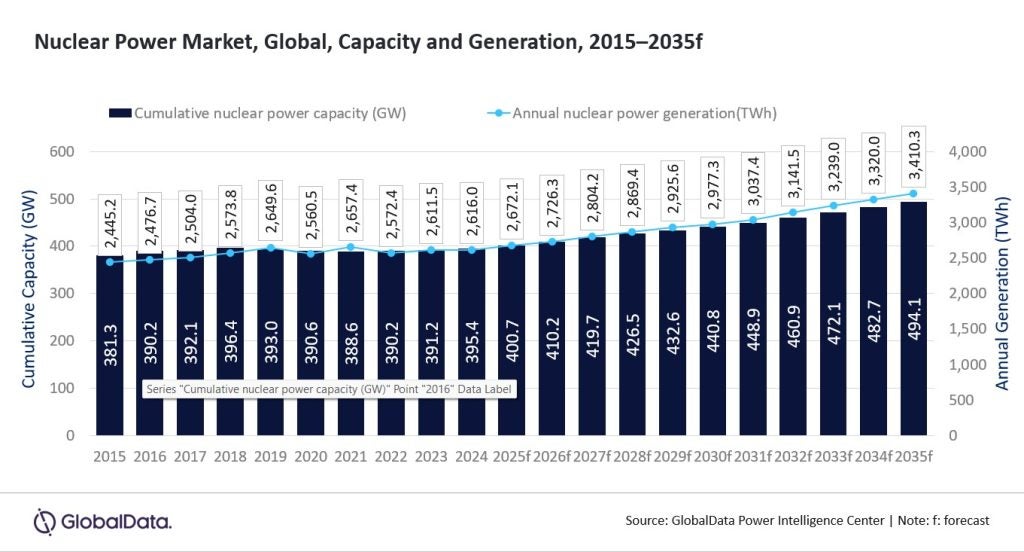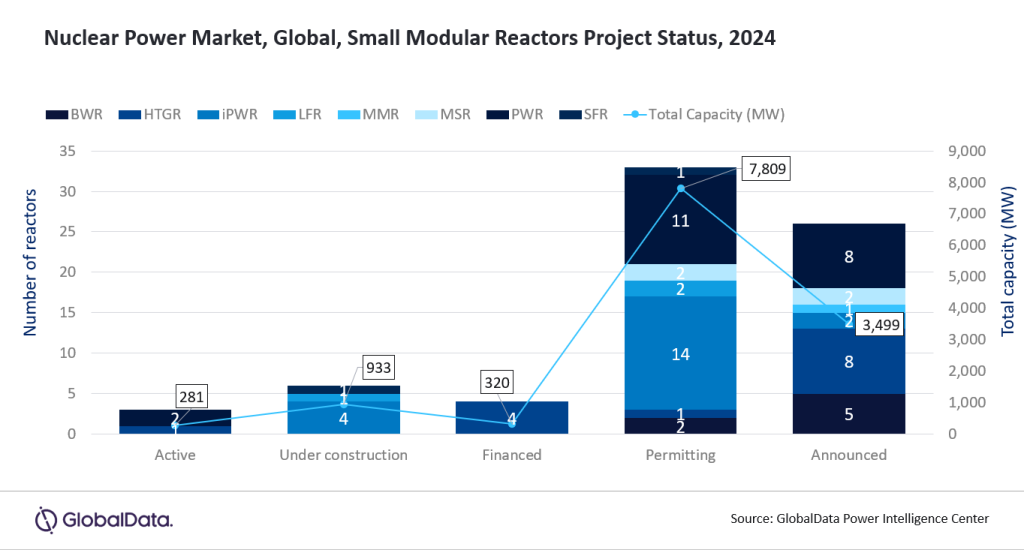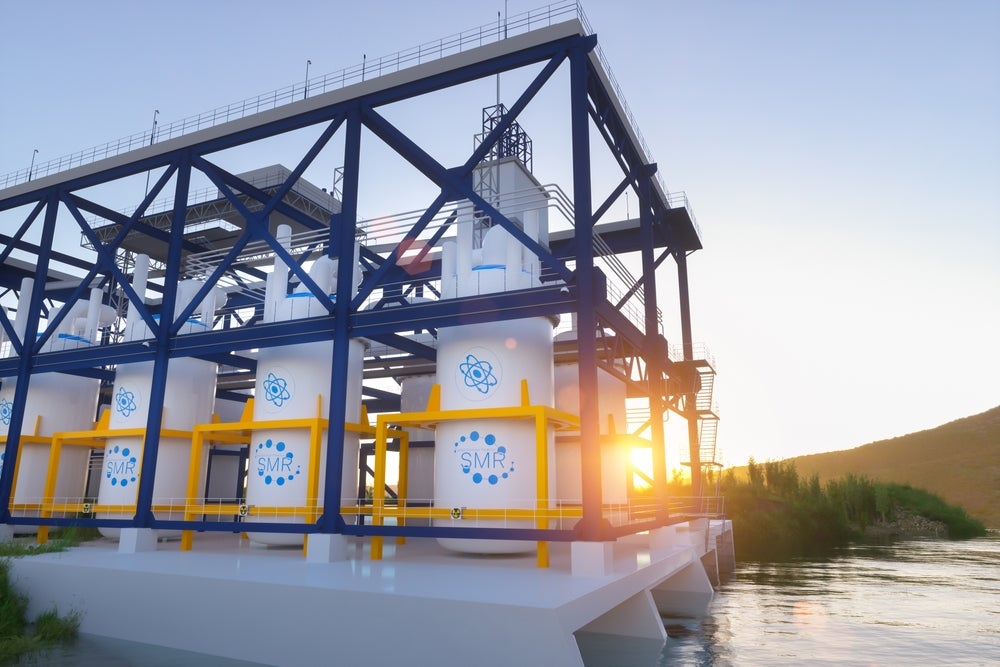Industry analysis report, “Nuclear Power Market, Update 2025 – Global Capacity and Generation, Small Modular Reactors, and Key Country Analysis to 2035” is the latest market analysis report from GlobalData, the industry analysis specialist.
The report provides a clear overview of and detailed insight into the global nuclear power market. The report provides data and analysis on the historic and forecasts of nuclear power capacity and generation, geo-political scenario, and market drivers and challenges for ten key nuclear power market countries –the US, Canada, China, India, Japan, South Korea, France, Ukraine, the UK, and Russia.
The report uses data and information sourced from proprietary databases, primary and secondary research, and in-house analysis by GlobalData’s team of industry experts.
Steady growth for nuclear power
The global nuclear power sector has witnessed steady growth in recent years, driven by the need for low-carbon baseload power, energy security, and a renewed interest in decarbonising industrial sectors.
New capacity additions, advancements in reactor technology with small modular reactors (SMRs) emerging as a transformative solution, and supportive policies have contributed to increased generation and reinforced the role of nuclear power in the energy transition.
Against this backdrop, nuclear capacity is forecast to grow from 395GW in 2024 to 494GW by 2035. The nuclear electricity generation will rise from 2,616 TWh to 3,410 TWh over 2024-35, reflecting a CAGR of 2%. While nuclear power accounted for around 9% of global electricity generation, countries with aging reactors have pursued lifetime extensions, while others have aggressively expanded their nuclear fleets, especially in Asia.

US Tariffs are shifting - will you react or anticipate?
Don’t let policy changes catch you off guard. Stay proactive with real-time data and expert analysis.
By GlobalData
The growing focus on energy security due to geopolitical tensions, increasing demand for low-carbon dispatchable power, government support through regulations and incentives such as grants, loan guarantees, production and investment tax credits, and market-based mechanisms like contracts for difference, advancements in SMRs and next-gen technologies, and a surge in electricity demand from data centres are the major reasons behind the increasing adoption of nuclear energy worldwide.
SMRs offer compact designs
Unlike traditional large-scale reactors, SMRs offer compact designs, flexible deployment, and advanced safety features that make them well-suited for remote regions, smaller grids, and industrial applications. With capacities typically under 300MW, SMRs can be factory-fabricated, transported, and assembled on-site, significantly reducing construction time and costs.
The global SMR pipeline is expanding rapidly, with more than 100 reactors at various stages of development. Although only a few SMRs are currently operational, primarily in Russia and China, the next decade is expected to bring a significant increase in new capacity, with more than 10,000MW anticipated by 2035. Countries such as the US, Canada, the UK, China, and Russia are leading the charge with diverse deployment strategies, marking SMRs as a key pillar in the global transition toward secure, low-carbon energy systems.

With growing concerns over climate change and energy security, nuclear power has re-emerged as a crucial pillar in the global energy transition. Governments across the world are implementing ambitious net-zero targets and investing in clean, dispatchable energy sources to decarbonise their economies.
Nuclear energy, with its ability to provide reliable baseload power and reduce dependency on fossil fuels, is playing a vital role in this transition. As countries ramp up their focus on SMRs, lifetime extensions, and advanced nuclear technologies, the nuclear power market is poised for long-term growth, driven by the dual goals of energy resilience and climate neutrality.




